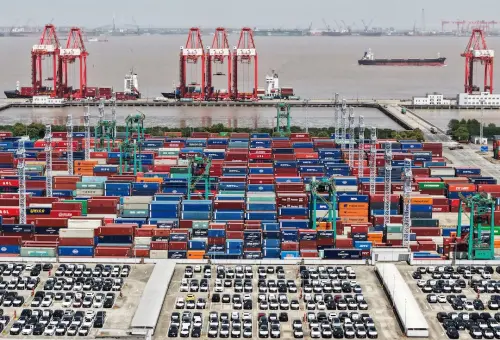Introduction
The World Bank significantly revised its global growth forecast for 2025, reducing it to 2.3% amid rising tariffs and growing economic uncertainty, which it describes as "significant headwinds" affecting economies worldwide.Context
In its latest Global Economic Prospects report, the World Bank lowered growth projections for nearly 70% of economies, including major players such as the United States, China, and Europe, as well as six emerging market regions. This revision marks a notable shift from projections made just six months prior, coinciding with U.S. President Donald Trump's administration and its fluctuating tariff policies.Trump's decisions to implement escalating tariffs have raised the effective U.S. tariff rate from below 3% to the mid-teens, the highest rate in nearly a century, prompting retaliatory measures from China and other countries. While the World Bank has noted the negative ramifications of these policies, U.S. officials argue that potential investment surges and pending tax reforms could mitigate adverse effects.
Developments
Although the World Bank refrained from predicting a recession, it characterized the projected global economic growth this year as the weakest since 2008, outside of recession periods. By 2027, average global GDP growth is expected to stagnate at 2.5%, marking the slowest pace of any decade since the 1960s.The report estimates global trade growth to reach 1.8% in 2025, down from 3.4% in 2024 and significantly lower than the 5.9% growth observed in the 2000s. This forecast is based on tariffs effective as of late May, including a 10% U.S. tariff on most imports, excluding any announced increases by Trump that have been postponed for negotiations.
Global inflation is projected to hit 2.9% in 2025, driven by tariff hikes and tight labor markets. The World Bank identified ongoing threats to the global economic outlook, highlighting that a 10 percentage point increase in U.S. tariffs could further diminish the 2025 outlook by 0.5 percentage points, causing a ripple effect throughout global trade and financial confidence.
Meetings among key officials in London this week aim to address the escalating trade disputes, which have expanded from tariffs to restrictions on rare earth minerals, potentially ushering in a global supply chain crisis.
Despite the prevailing uncertainty, World Bank Deputy Chief Economist Ayhan Kose noted that dialogue on trade is increasing, which may alleviate some concerns, and that supply chains are adapting rather than collapsing. A modest trade growth rebound could occur in 2026, rising to 2.4%, alongside potential growth boosts from advancements in artificial intelligence.
Conclusion
The World Bank's outlook has deteriorated substantially since January, particularly for advanced economies, now expected to grow by only 1.2%, down from 1.7% in 2024. The U.S. growth forecast has been adjusted down by 0.9 percentage points to 1.4%, and projections for 2026 have dropped by 0.4 percentage points to 1.6%. The euro area and Japan also faced reductions in their growth estimates. Emerging markets and developing economies are projected to grow by 3.8% in 2025, compared to earlier estimates of 4.1%.Countries with fewer resources are likely to experience the most severe repercussions, with projections suggesting that by 2027, the per capita GDP for developing economies will be 6% below pre-pandemic levels, and some nations could take up to 20 years to recover from the economic setbacks of the 2020s. Notably, Mexico's growth forecast was reduced by 1.3 percentage points to 0.2% in 2025, heavily influenced by its trade reliance on the U.S. Meanwhile, China's growth forecast remains steady at 4.5%, buoyed by potential fiscal and monetary responses to support its economy.
